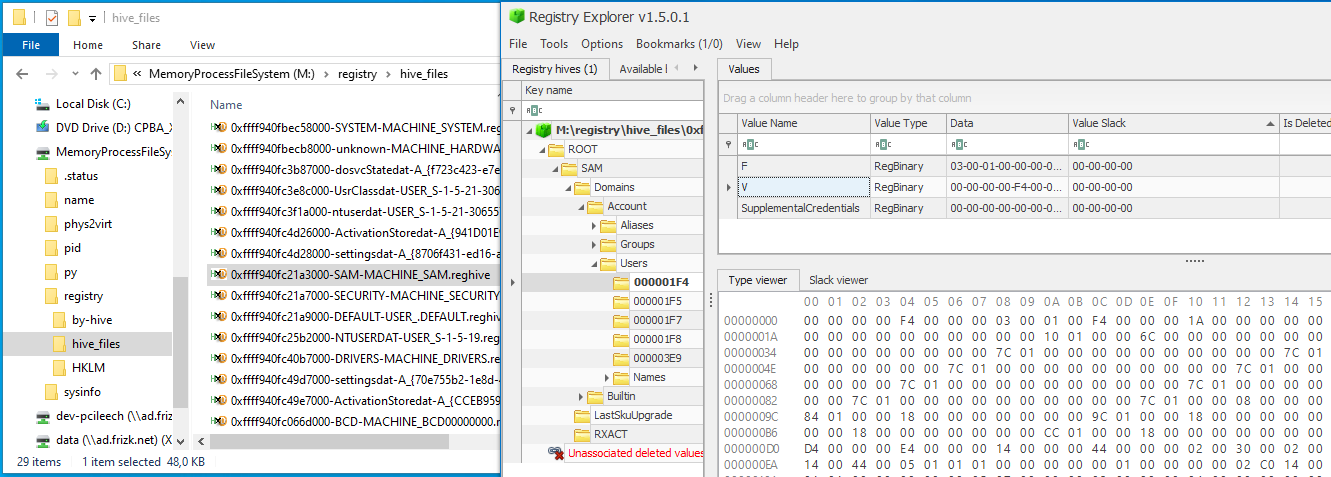-
-
Notifications
You must be signed in to change notification settings - Fork 382
FS_Registry
The directory registry exists as a sub-directory to the file system root.
Registry hive files are listed in the registry\hive_files\ sub-directory. Hive files are reconstructed from memory fragments with a best-effort algorithm. Hive files may be partially corrupt due to unavailable paged-out memory pages being zero-padded. It's possible to open hive files with 3rd party tools like Registry Explorer.
The registry hive files are writable if a write-capable memory acquisition device is used. Writes will be written into memory of the target system - not onto the disk. Writing may cause registry corruption.
All enumerated registry hives are listed in the registry\by-hive\ sub-directory. Each hive contains a ROOT key for the normal registry and an ORPHAN key which may contain registry keys without known parent keys (due to deletion or missing registry memory).
Registry key are represented as directories. The last write timestamp of the registry key is reflected in the last modified timestamp of the directory. Deleted keys may show up as compressed directories. If multiple keys with the same name are enumerated they are represented with a suffix of 1 to 9.
Each registry value is represented as two files - one binary representation of the binary data without a file ending and one text file containing a human readable representation including the registry key type.
Registry keys and values in the file system are read only. To edit the registry in-memory please edit the hive files.
The registry folder registry\HKLM\ provides a stable path/shortcut to common registry hives grouped under HKEY_LOCAL_MACHINE. This view is otherwise the same as the registry\by-hive\ view.
The example below shows a user exploring the hardware hive in the registry\HKLM\HARDWARE\ folder. Text files contains a human readable summary of the registry value type and its content. Non text files show the binary value data. The data modified time stamp shows the registry key last write time.

The example below shows the registry\hive_files\ directory and its contents in the form of enumerated registry hive files. The registry hive SAM is also opened in the 3rd party tool Registry Explorer.

The registry sub-directory is implemented as a built-in native C-code plugin. The plugin source is located in the file modules/m_winreg.c in the vmm project.
Also check the C/C++ API and the Python API wiki sections for information about the registry API.
Sponsor PCILeech and MemProcFS:
PCILeech and MemProcFS is free and open source!
I put a lot of time and energy into PCILeech and MemProcFS and related research to make this happen. Some aspects of the projects relate to hardware and I put quite some money into my projects and related research. If you think PCILeech and/or MemProcFS are awesome tools and/or if you had a use for them it's now possible to contribute by becoming a sponsor!
If you like what I've created with PCIleech and MemProcFS with regards to DMA, Memory Analysis and Memory Forensics and would like to give something back to support future development please consider becoming a sponsor at: https://github.com/sponsors/ufrisk
Thank You 💖